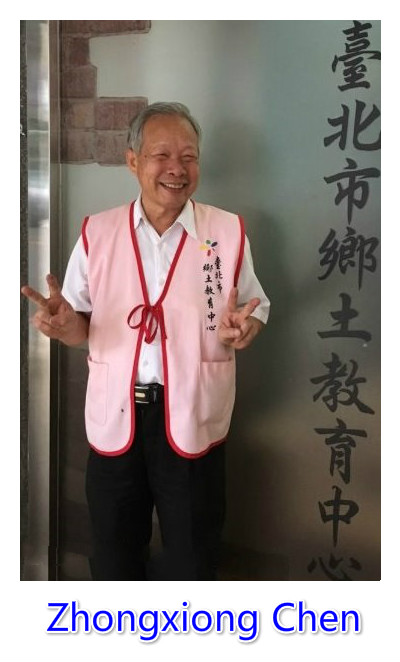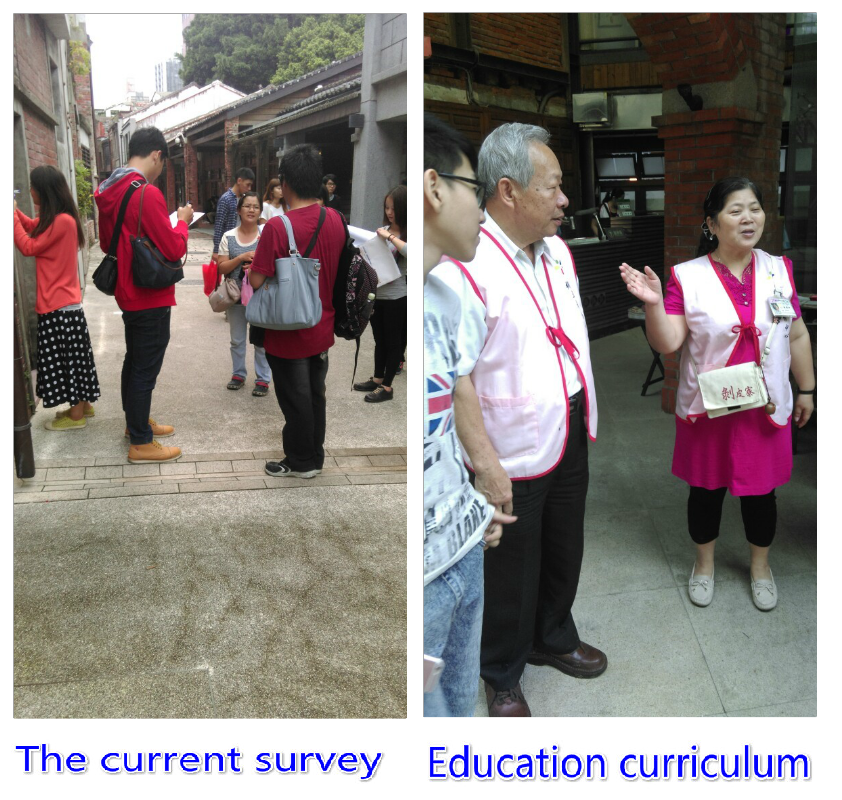We practically interviewed the residents who were working In Bo-Pi Liao. The following are our interview questions.

Question 1:
What is the core value of the conservation of Bo-Pi Liao historic district?
Answer:
It is mostly to protect the old streets built in the Qing period and the Japanese Rule Era. There is only a small part of the real Bo-Pi Liao street left, which is Lane 173, Kangding Road today.
Question 2:
What is Bo-Pi Liao’s relationship with its surroundings?
Answer:
The historic district was in fact reserved for Lao-Song Elementary School’s use. In 1966, with 158 classes and a total of 11100 students, Lao-Song was the largest elementary school in the country. Later on, because of the new Long-Shan Elementary School founded at the southern end of Guanzhou Street and of the decreasing birth rate, the number of students reduced. Many residents run a business here and therefore, refused to be levied. The levy compensation only finally worked out in 1999.
Question 3:
How is Bo-Pi Liao historic district managed?
Answer:
Bo-Pi Liao is divided into the east and west section. The east section belongs to the Department of Education of Taipei City, who established the Heritage and Culture Education Center that now belongs to Lao-Song Elementary School. The west section belongs to the Department of Cultural Affairs of Taipei City.
Question 4:
What is your vision for Bo-Pi Liao historic district in the future?
Answer:
Of course it is the best if it can be preserved. There are Qing-styled store houses, whose features include adobe walls, cylindrical walking space beams, and the design of “front shop and back home.” After the urban reform project in 1908, shops were opened on Guanzhou Street, where 2-storied store houses with an arched façade started to appear. By preserving these, tourists from everywhere in Taiwan and abroad would be able to see how Qing-styled streets are like.
Question 5:
What is the idea behind this culture education center?
Answer:
The most important is the story room, where the story of Bo-Pi Liao is told. There is a medicine room, where traditional and modern medicine are introduced. There is also an education room, where traditional and modern education system are explored. The spirit of preservation is passed on to the next generation.
Question 6:
What spirit is behind the preservation of local features?
Answer:
It is of course the preservation of traditional cultures. If they are not preserved, people can’t learn about the difficult experiences of the pioneers who migrated to Taiwan from Fujian Provence during the Qing period, the features of traditional store houses, the city reform project carried out by the Japanese government, and the architectural characteristics. Comparisons would also be possible. Because of the sound preservation, many TV and movie producers choose to film here, like the movie “Monga.”
Question 7:
What benefits does it bring to local communities?
Answer:
Local cultures could be spread and passed on. Also, some industries that are linked o Longshan Temple could be boosted. Where there is a temple, there are festivals and where there are festivals, there are crowds who want to enjoy a night market. When there are crowds, business starts to boom, and economy is boosted.
Question 8:
Is it easy to preserve the landscapes from the Qing period, the Japanese Rule Era and their changes after the war?
Answer:
Preserving these landscapes and their changes is to preserve the cultures accumulated from the Qing period to today. It is not easy, because it may collide with business profits.
Question 9:
How long did it take to restore the buildings?
Answer:
Phase 1 started in July, 2003 and finished in June, 2009. Because of the old age and the fraying condition of the old street, attention had to be paid to every detail of the repairing work, the maintenance and the preservation of important remains. After 6 years, the old street was finally restored to its original appearance.
Question 10:
What strategies are adopted to help local residents and visitors learn about the features of Bo-Pi Liao?
Answer:
There are volunteers from Taipei City Archive, who are often retired seniors. They provide guided tour so that visitors could learn about the history and culture of Bo-Pi Liao.
Question 11:
What is the meaning and significance of the preservation of Bo-Pi Liao historic district?
Answer:
The restoration and revitalization of Bo-Pi Liao is not only a project on hardware, but Taipei City government’s attempt to reboot the vitality of this historical neighborhood. In addition to boosting the regeneration of the urban district of Wanhua, it is also hoped to instill in the neighborhood the profound and strong human art spirit that was once embodied in the old Wanhua, and to re-create the glory of Bo-Pi Liao.
Question 12:
What is the significance of the restoration of Bo-Pi Liao?
Answer:
To preserve the original appearance of the historic district. Many people demanded demolition, construction companies wished to have new buildings, and only people with more cultural awareness supported preservation. Thank goodness it was preserved. Bo-Pi Liao was a street that curved from Longshan Temple to Kainding (which used to be called Guting Zhuang), and further reached Jingmei along Xindian River. Only wide enough for two bull-pulled wagons, it was the biggest road at that time. The core value is to preserve historic remains. The district is not yet a monument as the buildings haven’t met the criteria.
(Photos in below are taken by our team members.)

|



